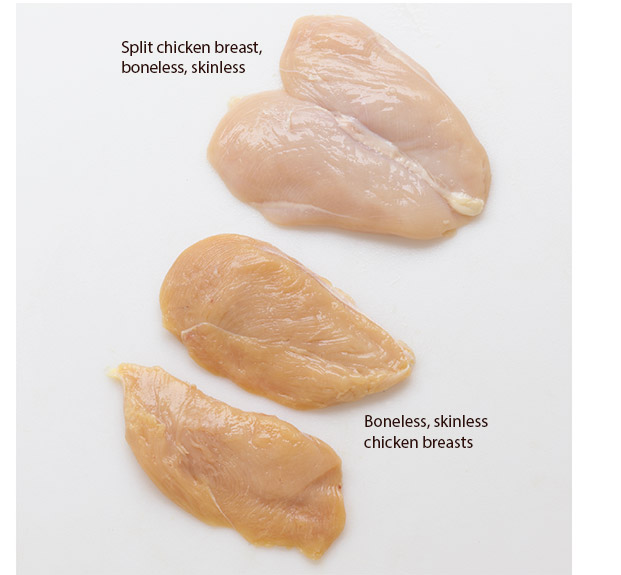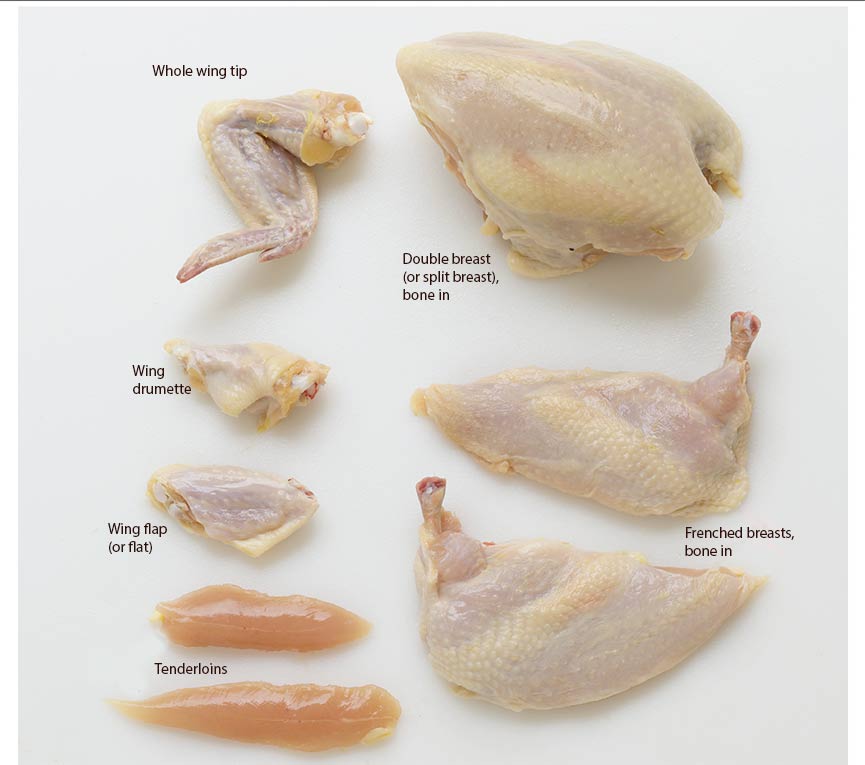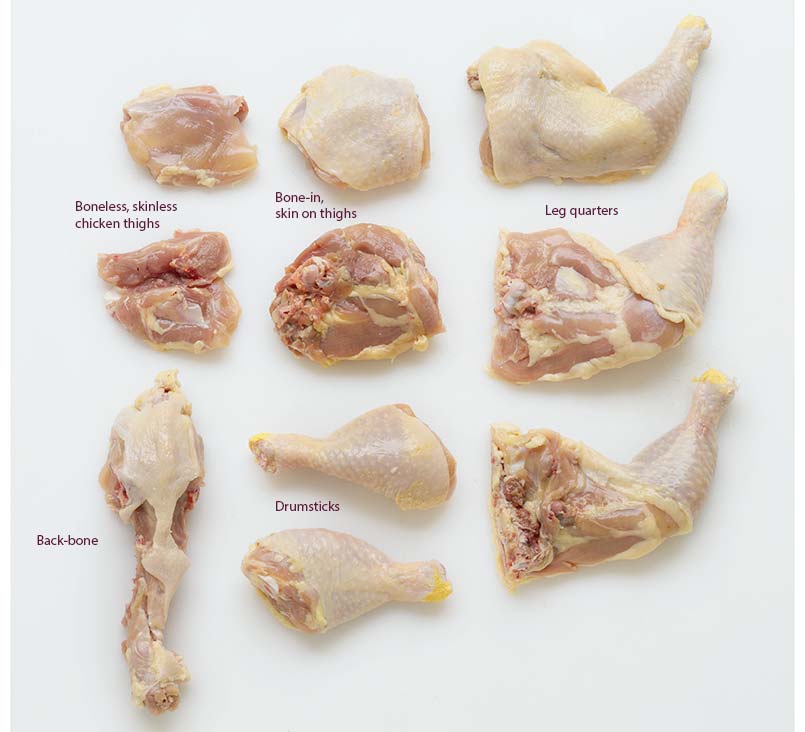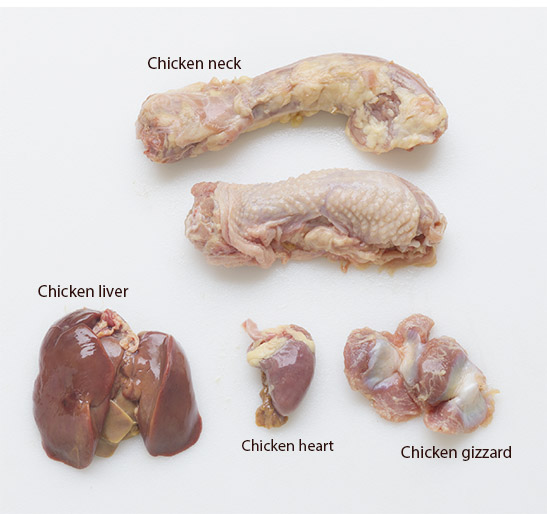Boneless, skinless chicken breast is one of the most popular items in American homes, and no wonder. They’re easy to pick out, easy to store, and easy to cook. But whether you’re tackling new recipes, shopping a great sale, or figuring out exactly what is in your CSA box, sometimes you need to access some advanced chicken knowledge. In this post, we’ll show you pictures of chicken parts you may see in the store, and give you some guidelines to determine how to best enjoy each one.
Boneless, Skinless Chicken Breast
Sold either as a pair (confusingly referred to as “split”) or as individual breasts, these items are best for quick-cooking methods like sautéing or grilling. If adding to a soup, stew, or other long-cooking recipe, it is often best to brown the meat and add it back to the dish near the end of cooking. This keeps it from overcookig and becoming tough or stringy.

Light Meat
Light meat mostly refers to the chicken breast, as well as the boneless tenderloins that are attached to it. Bone-in chicken breasts, despite being leaner than the thighs and legs, are connected by the breast bone and covered in a layer of skin. This makes them less prone to overcooking than boneless breasts, so you can cook enjoy them roasted or grilled. Most breasts are sold with the tenderloin still attached, but you can often purchase just tenderloins for cheaper. You can treat the tenders as you would a boneless breast, keeping it mind that it is smaller so will cook much more quickly.
Chicken wings, and their individual parts (the drumette and the flap or flat) are typically most commonly eaten fried, grilled, roasted, or smoked, and then coated in a sauce or rub. They are also useful in building flavor in stocks and broths, since they are boney with lots of collagen.

Dark Meat
On a chicken, “dark meat” refers to the fattier, richer cuts, like the thighs, drumsticks, and legs (which are simply the thigh with the drumstick still attached). These cuts can hold up to higher heat without drying out or getting chewy, which makes them great for grilling and roasting, as well as longer cooking methods, like braising or smoking. Boneless thighs can be treated like chicken breasts to be sautéed or grilled. While the backbone has limited meat, it is full of collagen, making it a great cut to use for chicken stock.

Gizzards/Giblets
These items are frequently discarded, but the neck bones and organs, like the liver and heart, are flavorful and useful, whether you eat them directly or add them to other recipes. Use the neck bones in stocks and soups for extra flavor. Save the organ meat to add to stuffings, rice dishes, stews, or pâtés.



